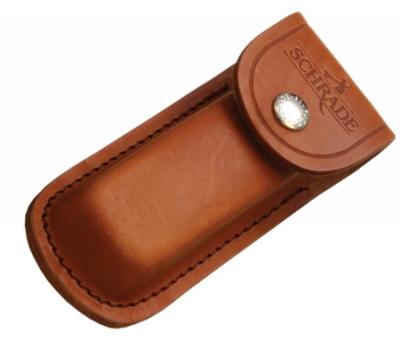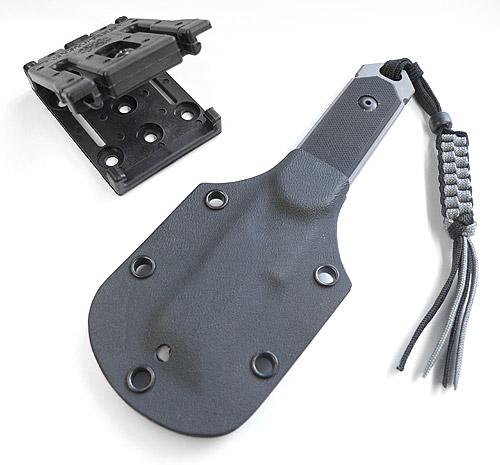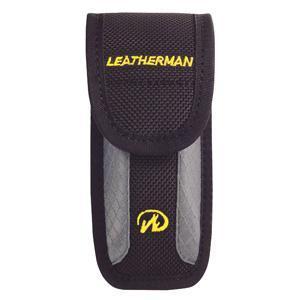One of the most overlooked aspects of a knife is its sheath. Sheaths are extremely important because they not only provide a means for carrying your knife, but sheaths they also protect the blade from being exposed to the elements of nature and getting scratched.
There are a lot of different types of sheaths out there designed to give you options for where you carry your knife, whether around your neck or strapped to your leg. This post looks at some of the various materials sheaths are made from and analyzes the advantages and disadvantages of each.
Leather
 Leather is a very traditional material used to make sheaths, and it’s still one of the best types of sheath material to have. There are many good things about leather, but one of the main advantages is the aesthetics. Leather is a well-known material that looks exceptional, feels nice in your hands and smells good. Leather is the kind of stuff that harkens back to the days cowboys and ruggedness. Leather is also very quiet when you’re putting a knife in and out of the sheath.
Leather is a very traditional material used to make sheaths, and it’s still one of the best types of sheath material to have. There are many good things about leather, but one of the main advantages is the aesthetics. Leather is a well-known material that looks exceptional, feels nice in your hands and smells good. Leather is the kind of stuff that harkens back to the days cowboys and ruggedness. Leather is also very quiet when you’re putting a knife in and out of the sheath.
Since leather is made up of natural material, it will eventually become unusable, but it also depends on how well you take care of your sheath. If you’re jumping into rivers and going into situations with extreme heat, the oils in the leather could dry out and cause the sheath to crack pretty quickly. If you take care of the leather by oiling it occasionally, it could last longer than the knife itself.
Kydex
 From the traditional, we move on to a more modern material for sheaths. Kydex, for anyone who doesn’t know, is a thermoplastic material that’s used to make holsters and other items. The greatest asset of Kydex is its durability. Whether submerged in salt water or exposed to different environments, Kydex will hold up fairly well.
From the traditional, we move on to a more modern material for sheaths. Kydex, for anyone who doesn’t know, is a thermoplastic material that’s used to make holsters and other items. The greatest asset of Kydex is its durability. Whether submerged in salt water or exposed to different environments, Kydex will hold up fairly well.
On the other side, one of the major disadvantages of Kydex is that unlike the classier leather, Kydex is nothing to look at. It basically looks like a hard piece of plastic with little personality. Although the dark and sleek texture of Kydex looks like it could be good for stealth and hunting, it is also unreasonably loud when you’re taking out a knife. There’s a noisy clanking sound, but if you don’t mind the click, it’s not necessarily a bad thing.
Yet another negative is that repeatedly taking out and putting back a knife into a Kydex sheath will dull its edge.
Another common material used to make sheaths is nylon. There are actually many different types of nylon sheaths made in various ways, so judging nylon is more difficult.
Although it’s less expensive than the previous two, nylon sheaths have the propensity to get worn out quicker. They get stretched out, but they usually continue to work adequately after that.
Plastic
Simple plastic sheaths (not Kydex) have the advantage of being the cheapest sheaths, but they are also the cheapest in quality. For all intents and purposes, plastic sheaths will not do a very good job holding your knife for extended amounts of time.
Conclusion
Selecting the material for a knife sheath is really a matter of preference and what you’re using the knife for. Some people just like the feel of nylon while others prefer the look of Kydex. If you’re using a survival knife in wet situations, you’ll want to avoid leather, but if you want something cheap you might opt for nylon. So, before making a purchase, consider both sides of each material.





October 6, 2016 at 2:09 pm
I appreciate this information about the different materials of knife sheaths. I did not know that leather was preferred because it feels nice in one’s hands and has an exceptional look. Something to consider would be to learn how to care for this case to keep it in good condition for an extended amount of time.
February 3, 2022 at 11:05 am
My Randal knife was in the leather sheath that it came in, but the acids or what was used to cure the knife caused corrosion. Maybe it’s just with certain ones????
January 20, 2017 at 1:12 am
Thanks for the information, but no pros and cons for wood?
February 24, 2017 at 12:55 am
I’ve Seen wood work , but my concerns would involve it wearing out if the fit was wrong or a nail or screw damaging the blade , and if you use glue , it could be a problem after a while if moisture is common in the areas of use , and sane for the wood , I’d be careful , but I’ve seen this done , in fact a friend has done this , it works well , but you will need a strap of some sort to secure the knife
May 20, 2020 at 7:01 am
Im concidering gettinga custom made sheath for two of my favorite knifes .i want a crossdraw right hand strong .ive noticed there area few diffwrent styles to chose from.some have the belt slots that run horizontal so you turn your sheath sideways,to insert the belt and that is what makes your knofe sit in the horizontal position.which i noticed puts a twist and bind on your belt makung it difficult to adjust the position of your sheath.then there are the ones that the slots run vertical ,and the knife sits in the sheath in a horizontal position .i own a few of the first stlye ,but none of the other im considering having one made with the vertical loops it seems moe natural of a position ,without twisting your belt snd with out the difficulty of putting on and removing the belt .what would be your opinion on this sir and why and which is your preference.